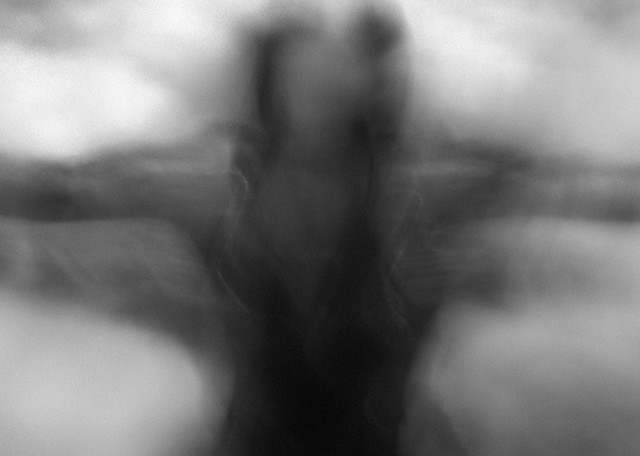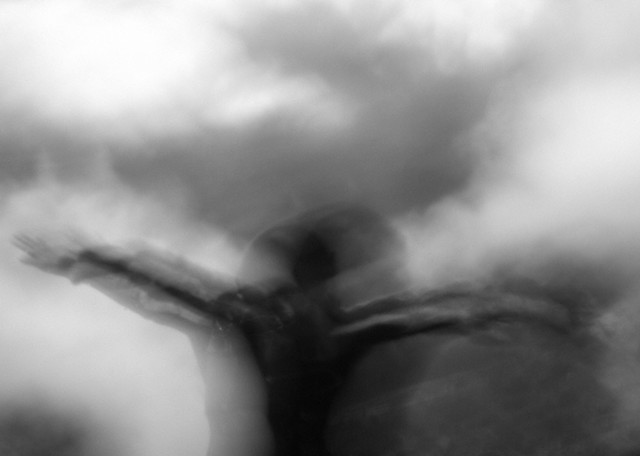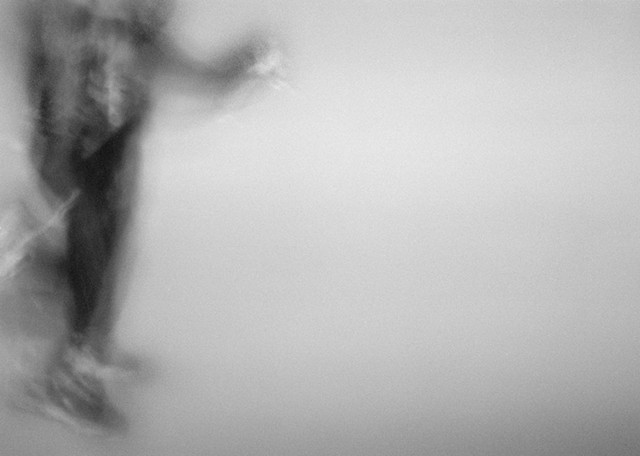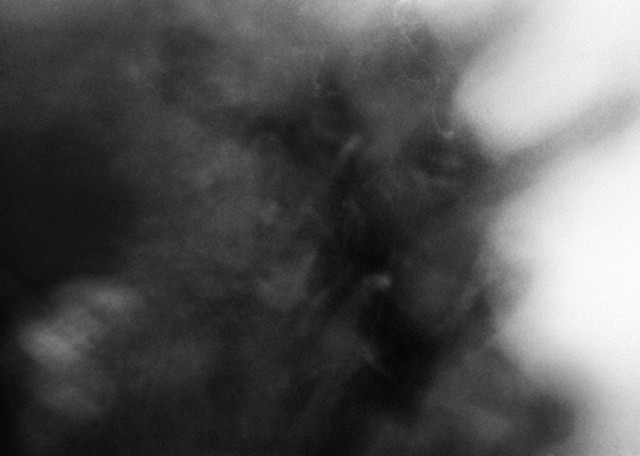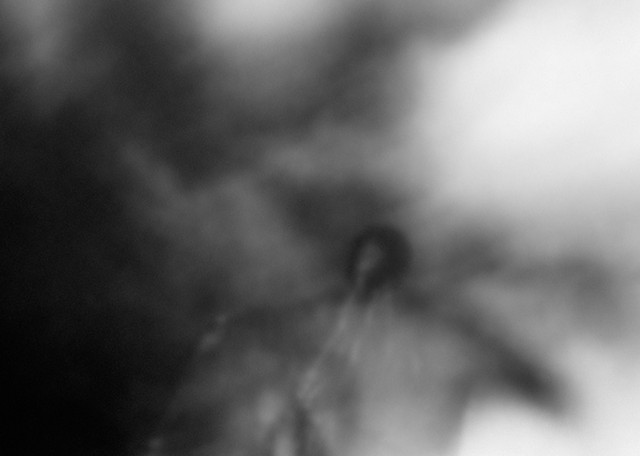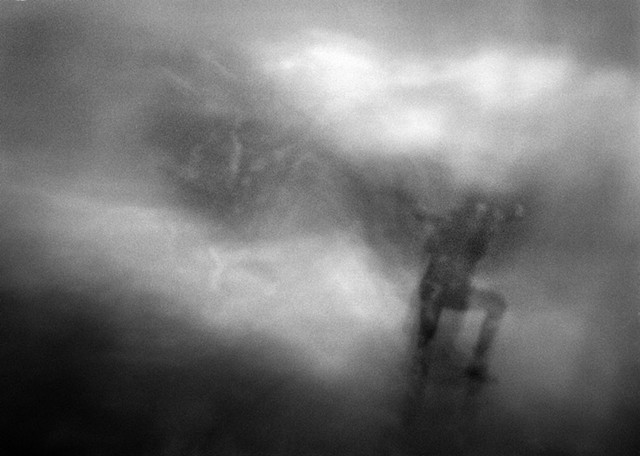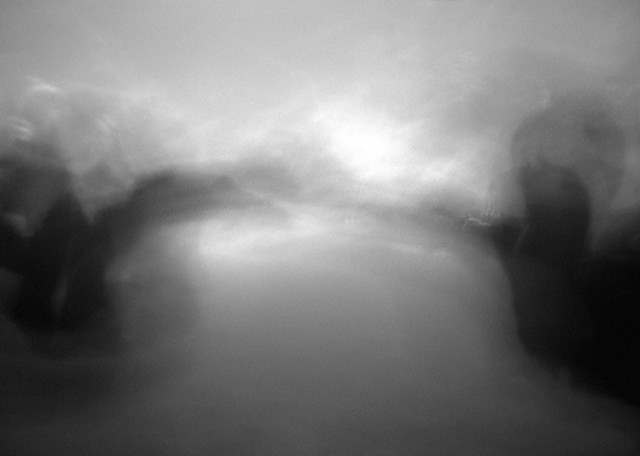Incident Report
Decision Altitude: Incident Report uses the medium of photography in an attempt to capture an image of the physical space and compression of time between throwing yourself out of the door of an aircraft and saving your own life. In this buffer zone between earth and sky the view of earth from above is anything but the sterile experience of cartographic representation, it is instead an incomprehensible combination of aerodynamics and adrenaline.
The title of this project refers both to the altitude at which a skydiver must begin emergency procedures and the photographer’s ‘decisive moment’ described by Henri Cartier-Bresson. His highly influential text came in response to the advancement in negative film processes that allowed for faster shutter speeds. There was suddenly a means to capture what had previously eluded the human eye; a moment of clarity only the camera could harness and make static.
Skydiving involves a series of thresholds, which are in skydiving also points of no return. The first is the moment of letting go, surrendering to the jump or fall. This moment is one of both intense confusion and clarity. When you step out of the door of an aircraft you face winds of up to 100 miles an hour. Using all of your strength to fight this wind, your muscles are tight as you cling to the out side of the aircraft. Then you let go. Fear is replaced with exhilaration. Embodiment is total. The past and the future seem to have no consequence. There is only presence, action and reaction. When you become skilled at this sport your body no longer fights the wind, it carves it. The wind becomes a medium that can move your body with ease on all six axis relative to the others you are falling with. After approximately a minute of freefall at about 3,000 feet above the ground a skydiver will begin their pull sequence in which they will initiate the deployment of their parachute. If for some reason there is a malfunction, the skydiver has until 1,500 feet to pull their reserve parachute. This is known as the decision altitude. This is the second point of no return; the altitude that you must either decide to keep the main parachute or to discard it and go to your back-up or ‘reserve’ parachute. Many of the deaths in skydiving are attributed to people ignoring the decision altitude and starting their malfunction procedures too late in the skydive.
Most skydiving photography uses wide-angle lenses and fast shutter speeds to freeze time and capture images with the highest possible clarity. In contrast, Incident Report uses a lens-less pin-hole camera which does not refract light but instead allows the image to imprint itself directly onto a piece of film over a period of three seconds hereby capturing 500-feet of free-fall at speeds exceeding 150 miles per hour. The process of taking these images includes a pinhole camera affixed to a specially designed helmet and shutter release. I wear this contraption on my head the entire duration of exit, freefall, canopy flight and landing. I cannot see what the camera sees so the images are composed with a great degree of chance. Coordinating our exits, my subject(s) and I jump from 13,500 feet in the air. This altitude provides me with one minute of freefall in which to compose and take the photograph. My subject and I must then match vertical fall rates, move into close proximity with one another then as I release the shutter hold as still as possible for between 500 and 1000 feet (3 – 6 seconds.) Most of the images generated by this process provide little or no recognizable information but the ones that succeed at capturing this absurd performance become unrefracted indexical marks of a human being falling through space and time recorded in photosensitive gelatin.
The photographic negatives are then used to make photogravures. Photogravure is a photographic etching process that dates back to the 1830’s and was developed as one of the first printing processes by the pioneers of photography. I was attracted to this printing process because of it’s historical significance and the highly physical image that is produced. Each image is then paired with text from the United States Parachute Association archive of “Incident Reports” which are the official reports from people who have died while skydiving. The reports that have been selected are of personal significance to me either because of the type of malfunction or because of the person or people involved.
Gravity is the medium of skydiving. The allure of the sport comes from both the desire to transcend it and the exhilaration of decent because of it. When you let go of the airplane life becomes a decision to make…pull or no pull. It is not often that our decisions and their consequences are this absolute. Incident Report investigates this space, the space between the illusion of immortality and the fact of death.

